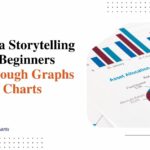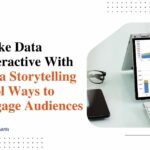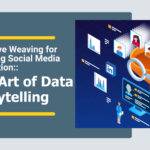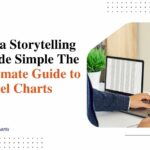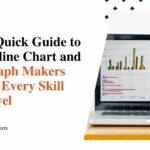How to Build High-Impact Data Narratives With Data Insights from Visualization Tools
In today’s data-driven world, creating data narratives has become critical for businesses to convey insights, influence decisions, and drive change. Data visualization tools empower us to uncover patterns, trends, and insights from data that can be woven into compelling stories to engage audiences and spur action.
In this blog, we’ll explore data narratives, how leading visualization tools help surface insights, and proven steps to build high-impact narratives that persuade and inspire.
What is a Data Narrative?
A data narrative uses visually represented data-driven insights to tell a strategic story that informs, inspires, or persuades an audience. It goes beyond just showcasing data to using insights uncovered from the data to support a meaningful point or argument.
The most compelling data narratives have a strong storyline, key takeaways, and visuals that make complex data easy to digest. They resonate emotionally with audiences through data storytelling elements like drama, conflict, and resolution.
Leveraging Data Visualization Tools

Modern visualization tools like Tableau, Power BI, and QlikView help anyone tap into data’s storytelling potential, even without coding skills. These tools analyze datasets, surface interesting patterns, and enable you to create rich interactive visualizations.
Building High-Impact Data Narratives
Here are the steps to build data narratives that drive change:
Step 1: Identify Audience and Objectives
First, define your audience and what you want them to think, feel, and do after engaging with your narrative. This clarity of purpose will help refine your storyline.
Step 2: Gather and Prepare Relevant Data
Identify datasets that can back up your storyline. Pull the data into your visualization tool. Shape and refine it to reveal key insights.
Step 3: Explore and Analyze Data
Conduct an in-depth analysis of your key points, uncovering insights like trends in KPIs, seasonality patterns, etc. Let the data guide you to potential stories.
Step 4: Identify Key Insights and Patterns
Spot the most compelling insights with the biggest emotional impact or influence on your goals. This is the core of your narrative.
Step 5: Craft a Compelling Narrative Structure
Build your narrative techniques using the classic storyline framework of beginning, middle, and end. Establish context and conflict upfront to hook your audience before moving into rising action and final resolution.
Step 6: Design Visually Appealing and Informative Visualizations
Turn your critical data points into easy-to-digest charts, graphs, and visuals tailored to different parts of your storyline. Maintain visual consistency.
Step 7: Integrate Insights and Visualizations into Your Narrative
Seamlessly blend narrative, data, and visuals together to create a unified, cohesive story. Use visuals to illustrate key points.
Step 8: Refine and Optimize Your Data Narrative
Review and refine your narrative techniques flow, visual design, story impact, and ability of your narrative to influence your audience. Have stakeholders review and provide feedback.
Best Practices for Effective Data Narratives
Follow these best practices to create persuasive, memorable data narratives:
a. Keep it Simple and Focused
Stay narrowly focused on the key storyline and insights that support it. Don’t dilute impact with peripheral points.
b. Use Appropriate Visualizations
Tailor visuals like graphs, heat maps, and funnel analysis to different data and insights.
c. Ensure Clarity and Readability
Use easy-to-understand language. Explain unfamiliar terms. Label visualizations clearly and highlight key data.
d. Provide Context and Explanations
Help audiences interpret data by establishing historical baseline, benchmarks, targets, etc.
e. Engage Your Audience Emotionally
Use storytelling techniques element like drama, conflict, and resolution to appeal to emotions, not just intellect.
f. Encourage Interactivity and Exploration
With tools like Tableau and Power BI, make visualizations interactive so audiences can explore data freely.
The Bottom Line
Data narratives that persuade and inspire require compelling data and its strategic interpretation and presentation. Leading visualization tools empower anyone to unearth data insights and weave them into high-impact stories. By identifying your audience and purpose, analyzing the right datasets, spotting key patterns, crafting an engaging storyline, and integrating interactive visuals, you can create narratives that drive change.
The key is turning data into insights and insights into influence that serves your objectives. With the right narrative, you can shape opinions, spur action, and build organizational momentum.


